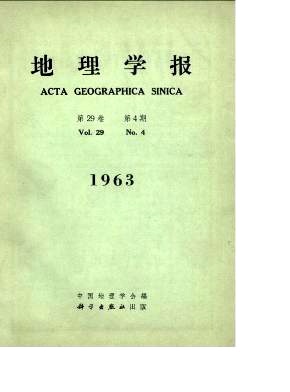SHEN YU-CHANG AND YOUNG I-CHOU
Above Shi-Ku in Li-Chiang Shien, Yunnan, the upper Yangtze or Ching-Sha-Chiang flows from northwest to south-east, but near-by Shi-Ku, it gives an abrupt turn to north-east forming an horse-shoe curve which has been known as "the first curve of the Yang-tze". This curious curve has long since caught the attention of Chinese and foreign geographers and geologists who explained it in various ways. Most scholars, such as V. K. Ting, C. Y. Lee, J. W. Gregory, W. Credner, G. B. Barbour, Li Shi-thing, Lin Wen-ing, P. Misch, r. II. roptuKOS, Jen Mei-ngo, believed that this phenomenon is the result of river-capture;while others, such as Li Chen-san, Yuan Fu-li considered it as the result of geologic structure or entrenching meander. In 1962, the present writers spent two months in surveying this region and have arrived at the conclusion that the theory of river-capture is based on insufficient evi-dences. First, the great curve near-by Shi-Ku is formed by geologic structure. Secondla. the broad valley between the villages Hung-Wen-Chen and Chien-Chuan, which is more than 50 Km. in width, develops along the great fault directing NNE-SSW. In the northern part of this broad valley, there are four large depressions developed by- solu-tion, and in the middle part of it, there arc Chiu Ho basin and Ho-Tung Valley, filled with Tertiary red beds, and its southern part is occupied by the Chien-Chuan basin. In old Tertiary time both sections of the Ching-Sha-Chiang above Shi-Ku, in Te-La of Te- Chin Shien, and below Shi-Ku in Shi-Tu-Kang of Li-Chiang-Shien, were occupied by small basins filled with local deposits of red beds. Thus, it is clear that at that time China-Sha-Chiang had not yet been integrated into an unified river-system. During the Himalaya Movement between old and new Tertiary, this region was raised, and at the same time, these formerly separated basins have been gradually linked together to be a single river-system. The old Ching-Sha-Chiang was thus formed. During this move-ment, part of the region south of Chien-Chuan was sunk by block fault and became basins filled with new Tertiary deposits, such as Ta-Li basin, Er-Yuan basin, Lien-Ti-Kai basin etc., all of which consist of late Tertiary lake deposits with brown coal. At the end of Tertiary, this region had been denudated to a peneplain, but afterwards it rose again in a large scale and becomes Yunnan plateau to-day. During the uprising, Ching- Sha-Chiang cut downward and became a great canyon. Above and below Shi-Ku, the shapes and breadths of Ching-Sha-Chiang valleys are very similar to each other. Even in the narrow Hu-Tiao-Canyon, rock-shoulders are found comparable to those of the upper valley about 2500 m. in height. This fact alone is sufficient to prove that this part of Ching-Sha-Chiang valley is very old and had been linked up long ago.
